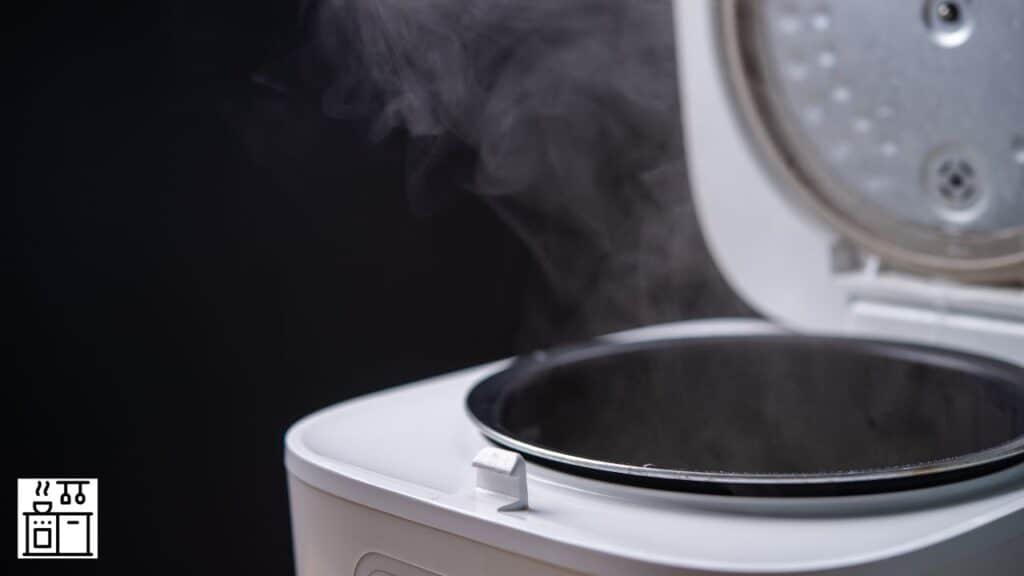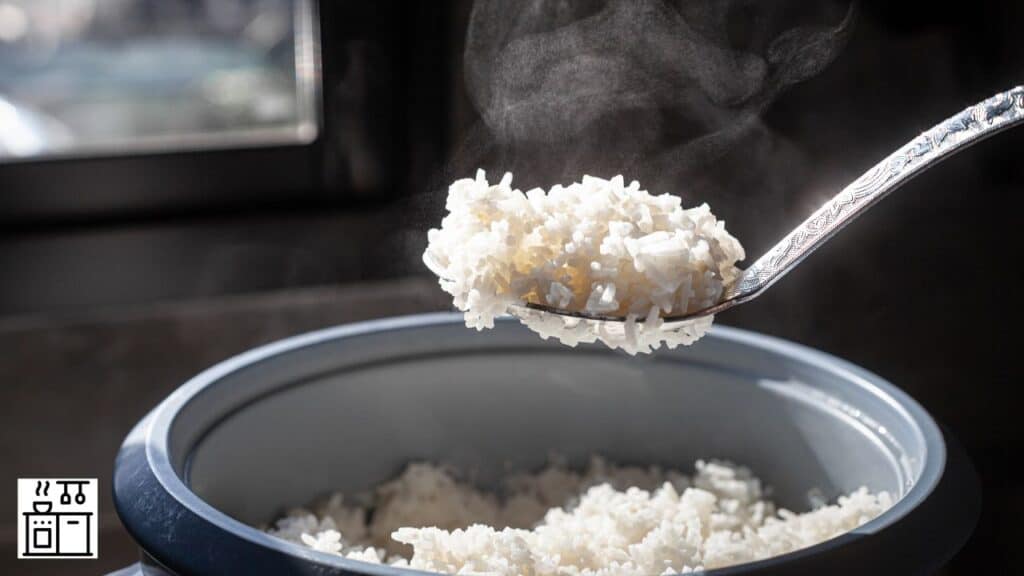Rice cookers are handy kitchen appliances that take the guesswork out of making rice and other recipes.
With proper care, these devices last a very long time. But their lifespan depends on how well you maintain them.
Without proper cleaning, rice cookers can become a breeding ground for germs and mold. So, how to clean a rice cooker?
Let’s find out.
- Steps to Clean a Rice Cooker
- 1. Unplug the Rice Cooker
- 2. Separate the Detachable Components from The Housing
- 3. Wash the Inner Pot with Warm, Soapy Water
- 4. Use Baking Soda to Remove Stubborn Stains
- 5. Clean the Detachable Parts in The Same Way
- 6. Clean the Heating Base
- 7. Clean the Exterior of The Rice Cooker
- 8. Clean the Steam Vent and Lid
- 9. Allow All the Components to Dry Before Assembling the Cooker
- 10. Assemble the Rice Cooker
Steps to Clean a Rice Cooker
There are different types of rice cookers, and the cleaning process slightly differs for each of them. Nonetheless, the basic steps are the same.
Read on to find out the different steps to follow to ensure that your rice cooker is well-cleaned and in top condition.
1. Unplug the Rice Cooker
Never clean a rice cooker when it’s plugged into a power outlet.
You will be using water for cleaning. So you can end up getting a shock if the current flows through it.
To avoid this risk, unplug the rice cooker before cleaning it. This will prevent accidental electrical hazards.
2. Separate the Detachable Components from The Housing
Every rice cooker, whether it’s a basic or advanced model, has various detachable parts. The inner pot is always removable.
Other detachable parts of rice cookers include a condensation collector and lid separator in advanced models.
The rest of the parts are usually fixed to the external housing unit.
It’s best to remove the detachable parts and clean them thoroughly. The procedure for cleaning the attached components will be slightly different.
3. Wash the Inner Pot with Warm, Soapy Water
Depending on the rice cooker model, the inner pot may be made of a metal alloy like stainless steel, or it may also have a non-stick coating.
Residual food will not stick to the base or sides of a cooking pot with a non-stick coating.
However, there may be stubborn food residue on the base and sides of cooking pots without a non-stick coating.
To dislodge any residue, soak the pot. Fill the pot with warm, soapy water and let it soak for several minutes.
Then, gently scrub the insides with a sponge to clean them thoroughly.
After removing the greasy or stubborn food residue, wash the pot thoroughly with warm water.
4. Use Baking Soda to Remove Stubborn Stains
Baking soda is a natural, non-abrasive cleaning agent. It’s effective in tackling stubborn food stains and residue.
If your rice cooker doesn’t get clean when you use soapy water, apply baking soda to clean it properly.
To use baking soda, mix it with water to form a paste. Apply this paste generously to all the discolored regions of the pot. Let it soak for several minutes.
Baking soda will lift the food stains and residue when you give it enough time to work.
You can gently scrub the insides of the cooking pot with a sponge or non-abrasive brush. Follow through by washing it with warm soapy water.
5. Clean the Detachable Parts in The Same Way
You can soak the lid protector and the condensation collector in warm soapy water to clean them.
Leave these parts in a solution of water and soap for several minutes. Then, gently scrub them with a sponge and rinse thoroughly.
You can lay them out for drying afterward.
6. Clean the Heating Base

The base of rice cookers has a concealed heating element. It’s responsible for heating the water for cooking the rice.
Different rice cookers have different types of designs for the base.
In some rice cookers, the heating element is concealed inside an elevated metal plate.
For others, the base will be uniform with the heating element beneath it.
In either case, cleaning the base involves the same steps. It’s important to clean the base properly to ensure that it functions properly.
Food that spills outside the rice cooker ends up in this area. It sticks there and becomes a stubborn food residue.
If no residue is stuck to the base, you can gently wipe it with a damp cloth followed by a dry cloth.
However, if there is any food residue, you may have to repeatedly wipe it several times.
Ensure that you use a dry cloth immediately afterward to prevent any water from remaining inside the rice cooker.
The base shouldn’t remain damp as it can damage the electrical components.
7. Clean the Exterior of The Rice Cooker
After cleaning the inner cooking pot and the heating base, start cleaning the exterior part of the rice cooker.
It’s easy in the case of basic models without a big control panel. You can use a damp cloth to wipe the entire area.
Gently wipe the surface and concentrate more on areas with stains. No scrubbing is necessary.
But if there are stubborn stains, use a gentle scrubber to target only the affected area.
Avoid getting water into the “On/Off/Keep Warm” switch because it can seep into the electric circuitry.
However, if the rice cooker has a prominent control panel, clean it carefully. You can use a damp cloth to clean the area aside from the control panel.
However, don’t allow any water to come near the control panel. This is a sensitive area with complex electric circuitry.
Use a dry cloth to gently dust and clean this area.
While cleaning the exterior of the rice cooker, get into all the nooks and crannies, like the spoon holder and behind the handles to get rid of any accumulated dust.
8. Clean the Steam Vent and Lid
Simple rice cookers have holes in the lid that allow steam to escape.
However, advanced rice cookers and multi-grain cookers usually have a steam vent.
You will have to clean this area thoroughly while cleaning the lid.
Clean the lid using a damp cloth and wipe it dry.
The steam vent can sometimes get clogged with food residue. This will compromise the safety of the appliance.
To make it safe for use, you must clean the steam vent to allow steam to be easily expelled.
To clean the steam vent, use a toothbrush or bristle brush. Insert it into the steam vent and scrub away any build-up.
You can also use a toothpick to dislodge any remaining food residue from this area.
9. Allow All the Components to Dry Before Assembling the Cooker
After cleaning all the parts of the rice cooker, let them dry thoroughly.
You can use a dry cloth to remove any remaining moisture from the internal pot, external rice cooker casing, lid, and other detachable parts.
This will reduce the chances of any moisture remaining, compared to if you let it drip dry.
10. Assemble the Rice Cooker
Once all the components of the rice cooker have dried completely, put the rice cooker back together.
Place the inner pot back on the rice cooker base. Attach the condensation chamber and lid protector, if any.
The rice cooker can be used for cooking after it’s thoroughly cleaned, wiped, and assembled.
However, if you don’t plan to use it immediately, it’s a good idea to cover the appliance with a cloth or cover to prevent dust formation on the surface.

